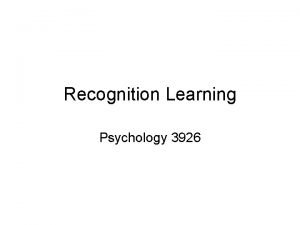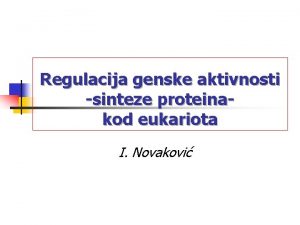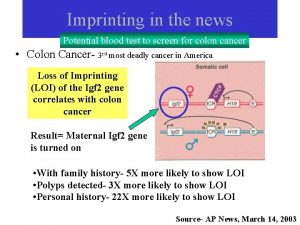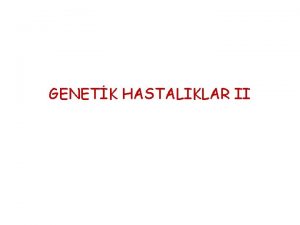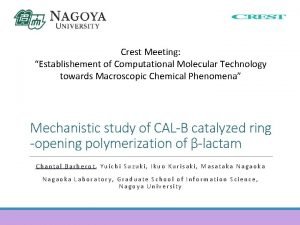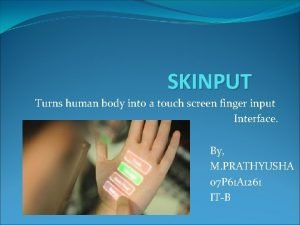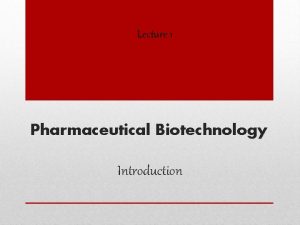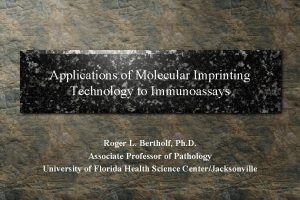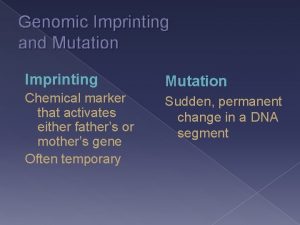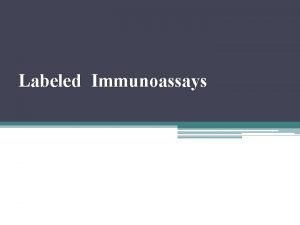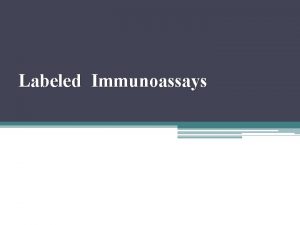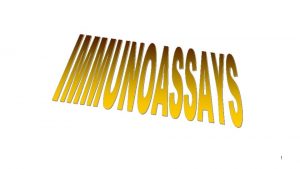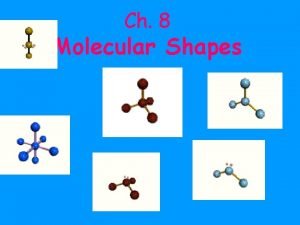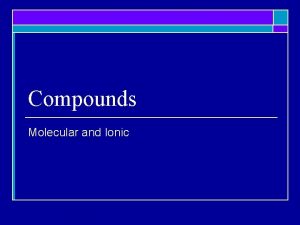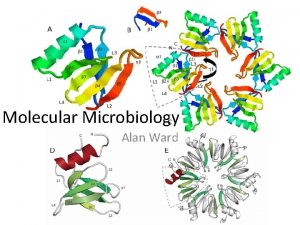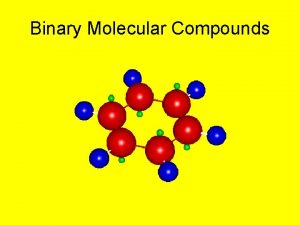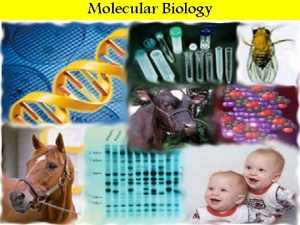Applications of Molecular Imprinting Technology to Immunoassays Roger













- Slides: 13

Applications of Molecular Imprinting Technology to Immunoassays Roger L. Bertholf, Ph. D. Associate Professor of Pathology University of Florida Health Science Center/Jacksonville

Early theories of antibody formation • Paul Ehrlich (1854 -1915) proposed that antigen combined with pre-existing side-chains on cell surfaces. • Ehrlich’s theory was the basis for the “genetic theory” of antibody specificity.

The “Template” theory of antibody formation • Karl Landsteiner (1868 -1943) was most famous for his discovery of the A/B/O blood groups and the Rh factor. • Established that antigenic specificity was based on recognition of specific molecular structures; he called these “haptens”; formed the basis for the “template” theory of antibody formation.

History of molecular imprinting • Linus Pauling (1901 -1994) first suggested the possibility of artificial antibodies in 1940 • Imparted antigen specificity on native globulin by denaturation and incubation with antigen.

The birth of immunoassay • Rosalyn Yalow (1921 -) and Solomon Berson described the first radioimmunoassay in 1957.

O - Fundamentals of antigen/antibody interaction CH 2 -CH 3 O NH 3 + O- OH Cl N O NH 2

Molecular imprinting (Step 1) Methacrylic acid + Porogen O H 3 C O NH N N CH 3 N

Molecular imprinting (Step 2) O H 3 C O NH N N CH 3 N

Molecular imprinting (Step 3) Cross-linking monomer Initiating reagent O H 3 C O NH N N CH 3 N

Molecular imprinting (Step 4)

Comparison of MIPs and antibodies Antibodies MIPs • In vivo preparation • In vitro preparation • Limited stability • Unlimited stability • Variable specificity • Predictable specificity • General applicability • Limited applicability

Immunoassays using MIPs • Therapeutic Drugs: Theophylline, Diazepam, Morphine, Propranolol, Yohimbine ( 2 -adrenoceptor antagonist) • Hormones: Cortisol, Corticosterone • Neuropeptides: Leu 5 -enkephalin • Other: Atrazine, Methyl- -glucoside

Aptamers Target 1014 -1015 random sequences Oligonucleotide-Target complex Unbound oligonucleotides + Target Aptamer candidates PCR New oligonucleotide library
 Imprinting definition psychology
Imprinting definition psychology Imprinting psychology
Imprinting psychology Genomski imprinting
Genomski imprinting Imprinting examples in animals
Imprinting examples in animals Genomic imprinting definition
Genomic imprinting definition Dengeli kromozom anomalileri
Dengeli kromozom anomalileri What is a covalent bond simple definition
What is a covalent bond simple definition Giant molecular structure vs simple molecular structure
Giant molecular structure vs simple molecular structure Zinc oxide + nitric acid → zinc nitrate + water
Zinc oxide + nitric acid → zinc nitrate + water Molecular technology
Molecular technology Molecular technology
Molecular technology Molecular technology
Molecular technology Skinput
Skinput Recombinant dna technology applications
Recombinant dna technology applications
